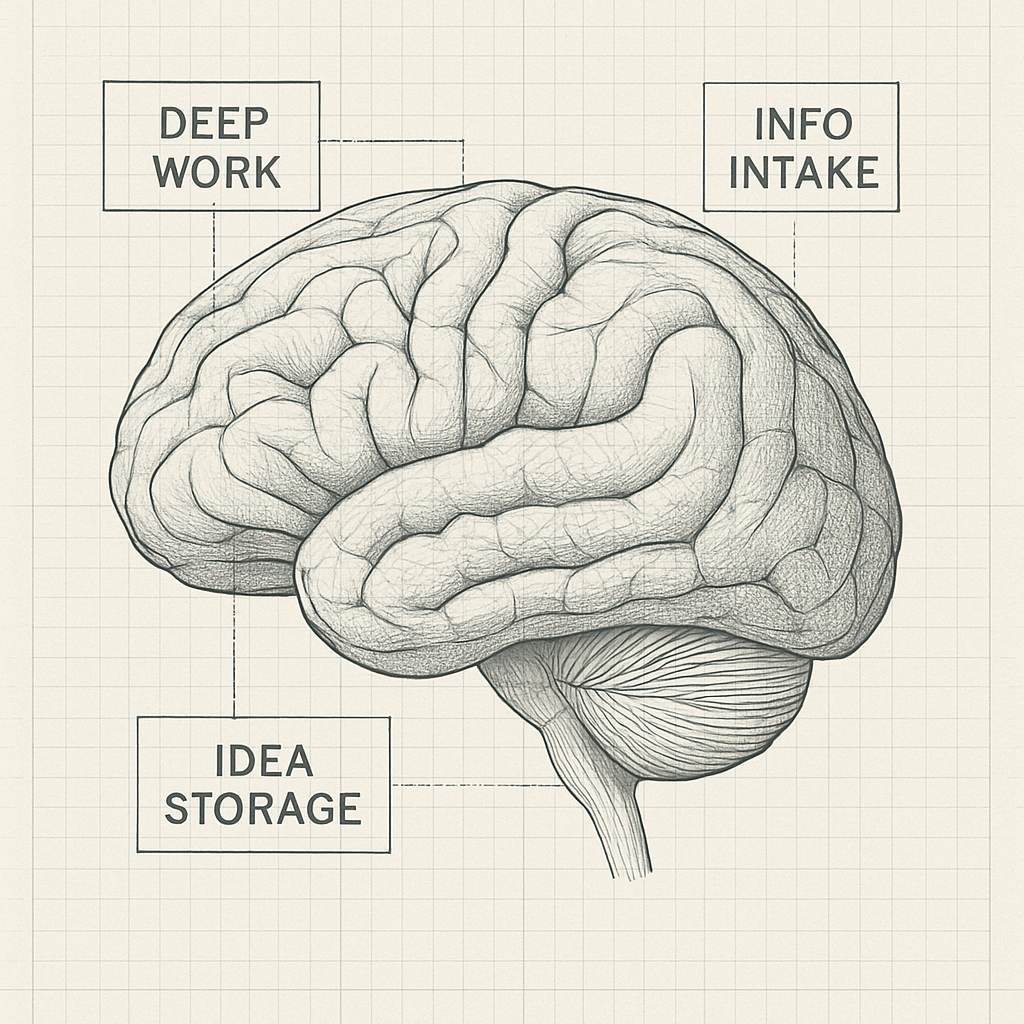
Table of Contents
Take a look at your browser right now. How many tabs are open? Ten? Twenty? Fifty? Each one represents a thought interrupted, a task pending, or an idea waiting to be explored. We treat this as normal behavior in modern work, but it’s actually a symptom of a critical failure: a poorly designed personal workflow.
A perspective forged through decades of analyzing complex systems suggests that focus isn’t a matter of willpower; it’s a matter of architecture. We can’t simply “try harder” to concentrate in an environment engineered to distract us. We must deliberately design a system for our own attention. When we’re overwhelmed, it’s often because we haven’t built the proper guardrails for our own minds.
The Architecture of Distraction
My own non-linear approach to processing information is a significant analytical strength, but it requires a robust external system to prevent it from descending into chaos. The same principle applies to any busy professional. We need to stop blaming ourselves for lack of focus and start architecting a better process.
Think about it this way: you wouldn’t run a critical enterprise system without proper resource allocation, load balancing, and clear data flows. Yet most of us operate our professional attention span like a server with no configuration management (constantly crashing under unexpected loads).
The modern knowledge worker faces what systems engineers call a “resource contention” problem. Our cognitive resources are finite, but the demands on them are essentially infinite. Email notifications, Slack messages, social media updates, and the ever-present browser tabs all compete for the same mental processing power.
Building Your Attentional Infrastructure
Longitudinal data from complex system deployments reveals a consistent pattern: the most resilient systems aren’t just powerful, they’re well-architected. The same principle applies to human focus. Consider these foundational elements for building your own attentional architecture:
Time as a Scoped Project. Treat blocks of your calendar not just as appointments, but as self-contained projects with clear boundaries. A two-hour block to “Analyze Q2 Sales Data” should have defined scope: specific inputs (the dataset, the key questions) and a desired output (a draft summary of findings). This creates a container that naturally resists interruption because everyone (including you) understands what breaking that boundary costs.
Read-Only vs. Production Modes. Separate the act of information consumption from the act of creation entirely. Designate specific, limited times for “read-only” mode: clearing your inbox, reading industry news, browsing articles. This prevents the constant influx of new information from derailing your “production” work (writing, analyzing, strategizing). It’s like having separate database instances for reporting and transactions.
The External Brain. Your mind is for having ideas, not for holding them. Use a dedicated knowledge management tool as an external hard drive for your thoughts. Every open loop, article to read, or half-baked idea should be offloaded into this trusted system immediately. This frees up tremendous cognitive RAM for actual thinking rather than remembering.
The Compound Effect of Focus Architecture
Here’s what most productivity advice gets wrong: it focuses on individual tactics rather than systemic design. You don’t need better time-blocking techniques; you need a better attention management system. The difference is architectural thinking versus tactical thinking.
When you architect your focus properly, the benefits compound over time. Deep work becomes easier because your system naturally protects it. Context switching decreases because your workflow has clear boundaries. Decision fatigue drops because your external systems handle the routine cognitive load.
Your attention is your most valuable professional asset. Stop letting poorly designed workflows and the endless stream of digital noise manage it for you. You wouldn’t run a critical enterprise system without coherent architecture. It’s time to apply the same disciplined, systems-thinking approach to your own focus.
The curse of the open tab isn’t really about browser hygiene. It’s about recognizing that sustained professional excellence requires intentional design of your cognitive environment. Start architecting accordingly.
For more discussion on strategies for professional productivity, let’s connect on LinkedIn.